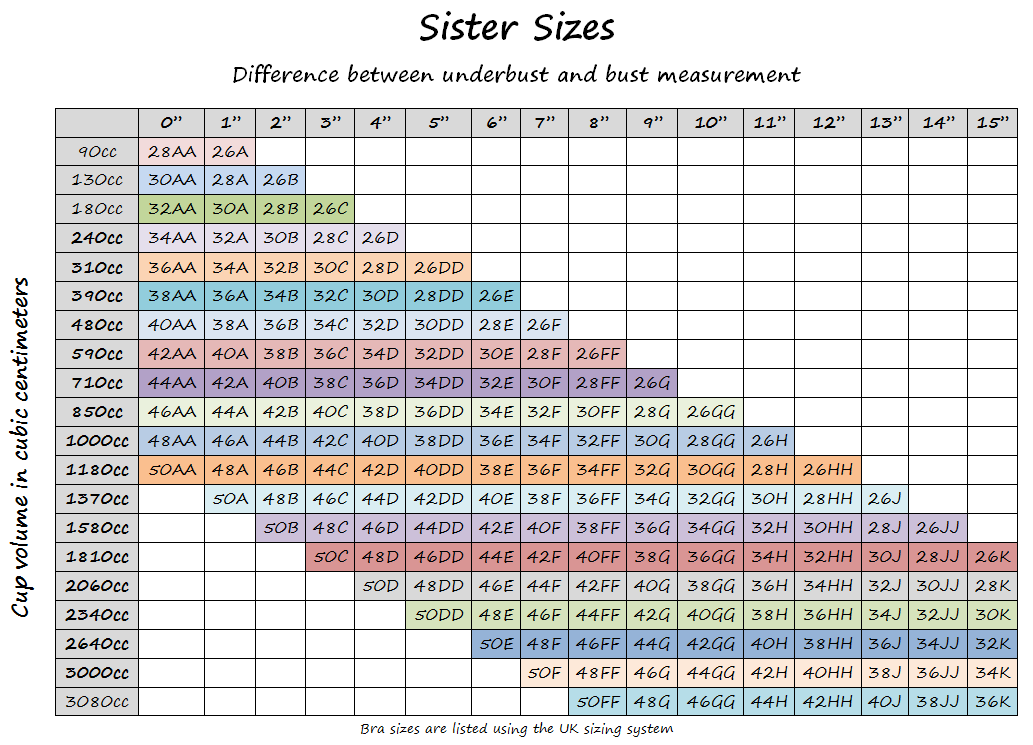The ultimate guide to bra fitting
The ultimate guide to bra-fitting
Even if you think you’re in the right size bra, take a look at this. A proper fitting bra can fix back, shoulder and neck pain, make a huge difference in comfort, support and shape, and make your breasts look a lot perkier.
Find your starting point
Grab yourself a soft tape measure and measure your under-bust—go right underneath the root of your breasts and make sure the tape stays parallel to the floor. Take a snug measurement, then round it up to the nearest even number. If you are less than half an inch away from the lower number, use that instead. Then, bend forward so your back is parallel to the floor and measure very loosely around the nipples, keeping the tape perpendicular to the floor. If your breasts are on the emptier side, this method may overestimate your cup size, so take your bust measurement bent over, standing and lying flat on your back to take the average of the three measurements.
The difference between your under-bust measurement and your bust measurement dictates your cup size, with every inch difference representing a cup size. If there’s a one inch difference, you’re an A cup, a two inch difference and you’re a B cup; and so on. Remember cup sizes are not standard and are relative to band size—the cup on a 30D has four inches less volume than the cup on a 34D. A 30D is therefore the same cup size as a 34B.
Don’t panic if this method puts you in a 30FF. Remember cup sizes are relative and this is a starting measurement. A 36D has the same volume as a 32E and a 26G.
Your next step involves a trip to a bra shop. Pick up a couple of bras in your starting size and try them on. Make sure you scoop and swoop before assessing whether it fits or not; bend over, pull the bra up to under the root of your breasts and scoop all of the breast tissue into the cup. All of it goes into the cup; many people find that after years of wearing bras that didn’t fit, some of their breast tissue has rolled around to their armpit or back and they need a larger cup and a smaller size as that swooped breast tissue moves back to where it belongs. Make sure the wire is positioned perfectly under your breasts and that all that boob is in its cup. Now you can stand up and assess the fit. If everything seemed to fit before scooping and swooping, it won’t fit now. You may need to go up or down a band size or cup size; not all bras are made the same, and the shape of your breasts determines size and fit. Don’t give up on your new calculated size, declare it nonsense and stuff yourself back into your ill-fitting 36C.
What is a proper fit?
A proper fit means the bra band is straight and parallel to the floor; the straps aren’t digging in; the gore (the centrepiece) sits flush against your chest; the breasts fit smoothly into the entire cup; and you should be able to lift your arms over your head without the band or underwire moving and exposing anything. The band may feel tight at first but it shouldn’t stretch more than a couple of inches off your back—remember that while it shouldn’t hurt, it’ll need breaking in and you may be used to wearing things that don’t fit correctly. If the gore isn’t sitting firmly against your chest, the wires aren’t completely underneath your breasts and won’t be giving you the support you need; at the same time, the wire should encase all of your breast tissue after scooping and swooping. There should be no empty space at the bottom or the top of the cup but you shouldn’t also be overflowing at the top; if there’s overflowing or uncontained tissue, or it just feels too tight in there, try a bigger cup.
Trouble-shooting your fit
If the gore fits snugly but the band feels tight, try going up a cup size before changing band size. It might be tight because the cups are too small and your breasts are stretching the band out too much to compensate for the lack of cup depth. If it still feels tight in larger cups, go up a band size and down a cup size. Remember it takes a few days to break a bra in, so it might feel tight at first and then become comfortable later.
If a size fits in one shop and not in another, don’t despair! Some cuts of bras are different, and shops size in different ways. Follow the advice and find the size that fits you in that shop; don’t let a sales assistant squeeze you into one of their bras just because you ‘should’ be a 34C. If your starting size is 30FF, you might find yourself fitting better into a 28G or H if the band of that particular cut of bra is too loose and the gore won’t tack to your chest. You might find the band is fine but you’ll need a bigger cup so you’ll buy a 30G.
Armed with your starting measurement, you’re in a much more powerful position as you march into a bra shop. Never settle for an ill-fitting bra again—everyone deserves a bra that fits!











Impostor syndrome is ‘the psychological pattern in which an individual doubts their accomplishments and has a persistent internalised fear that they are going to be exposed as a fraud.’